Is Cannabis the New Superfood?
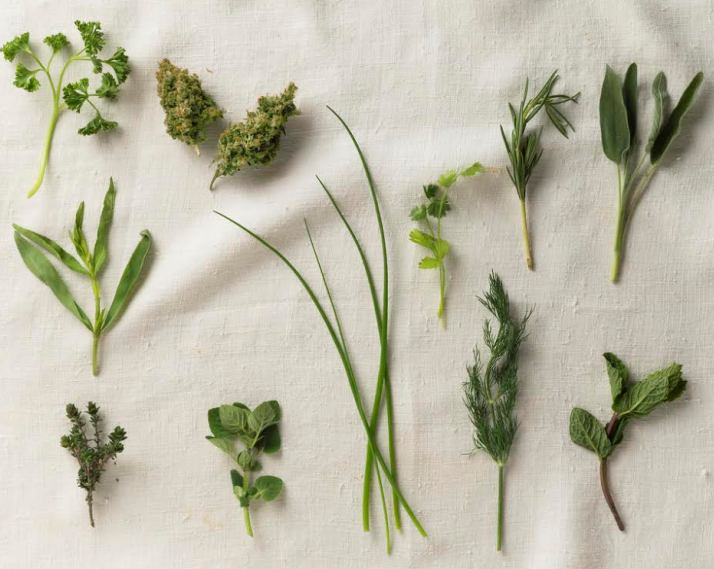 There was a time when the term "cannabis edible" was accompanied by a description of a sketchy guy at a Phish concert peddling his goods out of a backpack.
There was a time when the term "cannabis edible" was accompanied by a description of a sketchy guy at a Phish concert peddling his goods out of a backpack.
But with marijuana laws lighting up the nation—there are currently only 11 states in the US that outright prohibit cannabis—and studies continually showing the herb's medicinal benefits (from healing the brain after a traumatic injury to fueling creativity), it's verging on it-ingredient status (watch out, matcha), and despite the fact you prob won't see it on the Food Network for a while, it's gotten seriously gourmet.
We're not talking the pot brownies of your undergrad years: In the new cookbook Herb: Mastering the Art of Cooking with Cannabis, created by Matt Gray (the founder of online cannabis community The Stoner’s Cookbook), you'll find 200-pages of beautifully photographed and seriously sophisticated recipes crafted by pro chefs Melissa Parks (a graduate of Le Cordon Bleu) and Laurie Wolf (who trained at the Culinary Institute of America). Turns out, the herb infuses what Holt describes as an "earthiness" to even the most traditional dish.
We talked to the chef duo about the rise of cannabis cuisine, and got their favorite cold-weather (pot-infused) recipes. So, if you live somewhere where the green is legal, get cooking. Otherwise, try an herb-free take on the recipes for the time being; they'll taste just as good, buzz or not.
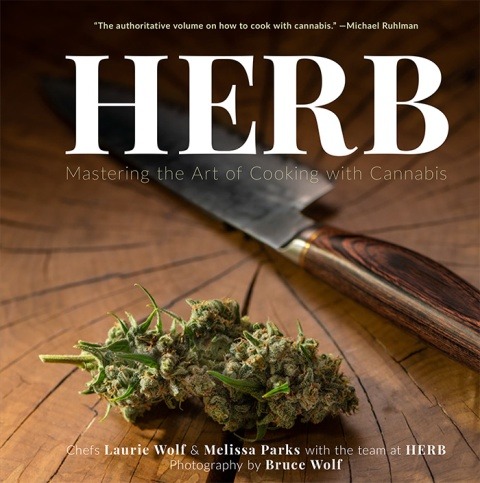 You're seriously trained chefs. When did you start cooking with cannabis?
You're seriously trained chefs. When did you start cooking with cannabis?
Melissa Parks: Cooking with pot was a foreign concept to me until [a few] years ago, when I was approached by a few close friends who all had serious ailments. The medicinal aspect of cannabis is what drew me in and still motivates me every day to explore and expand my knowledge of the plant and its uses.
Laurie Wolf: When I lived in Vermont, I made lots of brownies and the usual cannabis fare. After moving to Portland and getting my medical card I started making savory foods with cannabis; soups and chili with infused cornbread and some fancy appetizers with puff pastry. I began to realize that I needed to treat cannabis as an herb, working with the flavor at times and disguising the taste for other foods.

{{post.sponsorText}}
What is different about cooking with cannabis versus another herb?
MP: Each cannabis strain has its own characteristics, terpenes, medicinal value, and inherent flavor. As a result it's simultaneously nuanced, delicate, and has the unique ability to be paired with various ingredients and spices. Combining the science and chemistry of food with that of the weed is a challenge unlike any other I’ve faced in my career.
What advice would you give to would-be weed chefs?
LW: Don't let the cannabis burn, don't make your infusion too strong, and taste it before you make a big portion! Moderation is key. Tasting is something that took a while to figure out—too many tests and I end up in bed!
Ready to get baking? First, you’ll need to master the skill of crafting cannabutter (Cannabis butter), the base for all these tasty recipes. Here's how to make it, plus more cannabis-infused dishes...
(Photos: Herb)
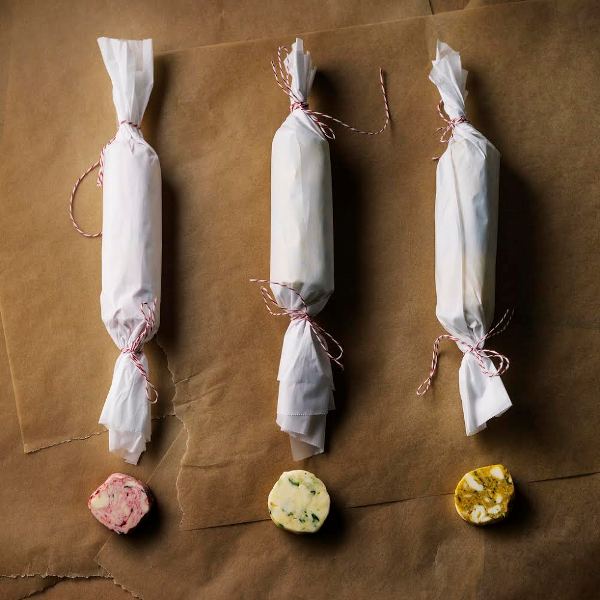 Cannabutter (Cannabis butter)
Cannabutter (Cannabis butter)
When you're making cannabutter, the key thing to remember is "low and slow"—infusing the unsalted butter over low heat for several hours, and never letting it boil allows, for full activation of the THC without scorching the herb. Use a high-quality butter, with less water, for a better taste. The finished butter will have a green tinge to it because of the cannabis. Your cannabutter will keep in the fridge for several weeks and in the freezer for up to six months.
Equipment
Large saucepan/pot
Whisk
Large glass bowl
Strainer or sieve that fits in the glass bowl
Cheesecloth
Spatula
Plastic wrap
Butter knife
Lidded glass jar (to store the finished cannabutter)
Ingredients
1 pound unsalted butter
2 cups water
1 oz. decarboxylated, ground cannabis buds, or 2 oz. decarboxylated dried, ground, and trimmed cannabis leaf
1. In a large saucepan, bring the butter and water to a rapid simmer (just below a boil—the liquid will be active, with small bubbles consistently rising to the surface) over medium heat until the butter melts.
2. Whisk in the cannabis.
3. Reduce the heat to low and bring the mixture to a slow simmer (there will be very little movement in the liquid, with small bubbles occasionally rising to the surface). Do not let the mixture boil.
4. Cook for five hours, stirring every 90 minutes or so. Add additional warm water if needed (you don’t want all the water to boil off).
5. While the butter cooks, line a strainer or sieve with cheesecloth and place it over a large glass bowl.
6. After 5 hours, pour the butter slowly through the cheesecloth into the bowl. Press down on the cannabis with a spatula to extract all the butter.
7. Fold the cheesecloth, and use the spatula to push any remaining cannabutter into the bowl. Discard the cheesecloth.
8. Cover the bowl with plastic wrap and refrigerate it for at least three hours (overnight is better). The mixture will separate into solid butter and liquid water.
9. Remove the butter from the fridge, discard the water, and slide a butter knife around the edges to remove the cannabutter from the bowl.
10. Transfer the butter to a glass jar with a lid and store it in the fridge or freezer.
Now, what to do with that cannabutter? Keep reading for three cannabis-infused recipes....
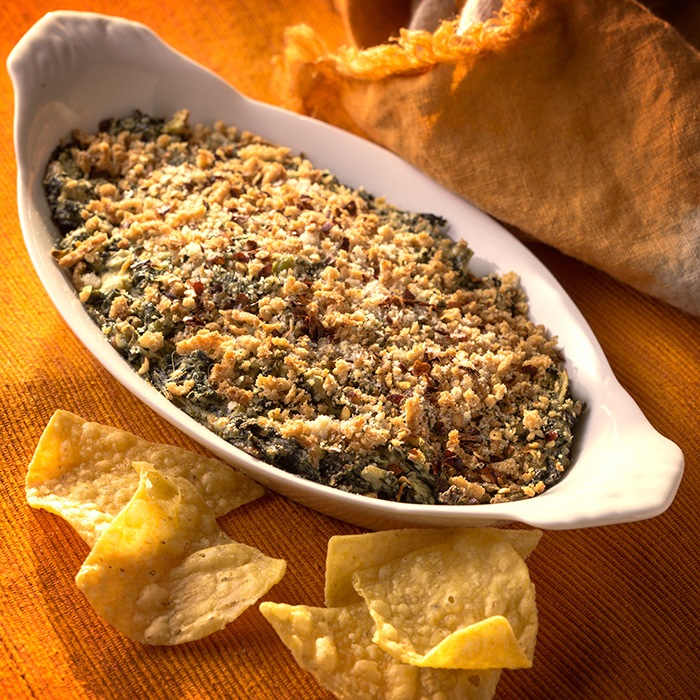 Spicy Spinach, Kale, and Artichoke Dip
Spicy Spinach, Kale, and Artichoke Dip
This is a crowd-pleaser dip that's both crunchy and creamy. If you like things spicier, add a few more tablespoons of pickled jalapeños before baking, or lightly sprinkle red pepper flakes over the top of the baked dip.
Makes 4 cups
Ingredients
1⁄4 cup cannabutter
1 Tbsp chopped garlic
8 oz. cream cheese, softened
1 1⁄4 cups freshly grated parmesan cheese, 1⁄4 cup reserved for topping
2/3 cup low-fat sour cream
1⁄4 cup mayonnaise
3⁄4 cup chopped canned, jarred, or frozen artichoke hearts (thawed and drained if frozen)
2 Tbsp chopped pickled jalapeños
1⁄2 tsp salt (kosher or sea)
1⁄2 tsp freshly ground black pepper
Pinch of ground nutmeg
1 cup finely chopped fresh kale leaves (any variety), stems discarded
1 cup frozen spinach, thawed and drained
1⁄4 cup plain bread crumbs
1. Preheat the oven to 325°F.
2. In a small saucepan, melt the cannabutter over low heat.
3. When the butter has melted, add the garlic and cook for 2 minutes, until it has colored slightly. Remove the pan from the heat and let the garlic butter cool.
4. In a large bowl, stir together the cream cheese, 1 cup of the parmesan, sour cream, mayonnaise, artichokes, jalapeños, salt, pepper, and nutmeg.
5. Stir in the kale and spinach.
6. Add the cooled garlic butter and mix thoroughly.
7. Pour the dip into an oven-safe dish (1 quart) and top with the breadcrumbs and reserved parmesan.
8. Bake until the top is golden brown, about 20 minutes. Serve with chips, crudités, or toast.
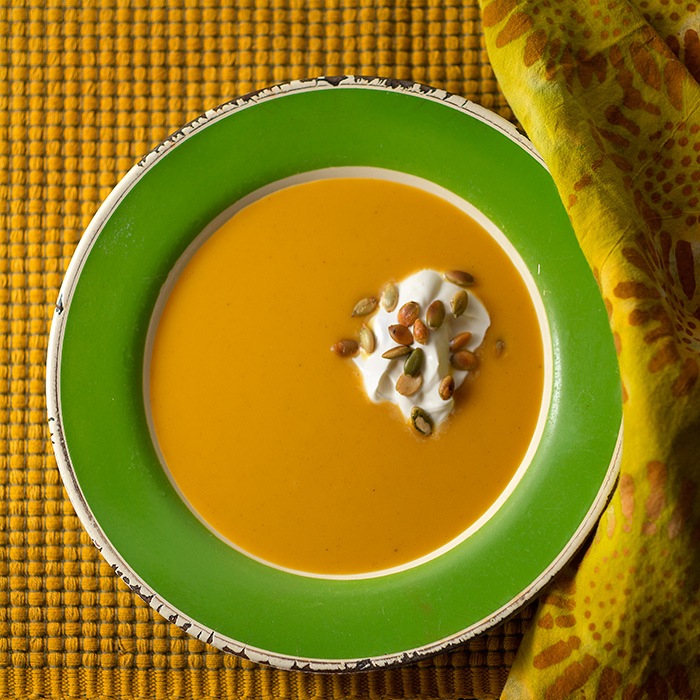 Butternut Squash Soup
Butternut Squash Soup
Pure flavors and a velvety texture make this soup an Herb favorite. (Hint: Many markets sell butternut squash already peeled and cut in chunks, which makes the preparation easier and faster.)
Makes 6 servings
Ingredients
2 Tbsp cannabutter
1 medium sweet onion, such as Vidalia or Walla Walla, finely diced
1 (2- to 3-pound) butternut squash, peeled, seeded, and cut into 1-inch chunks
5 1/2 cups unsalted chicken stock
1/2 cup heavy cream
1/2 tsp ground nutmeg
Kosher salt and finely ground fresh black pepper, to taste
1. In a large pot, melt the cannabutter over medium-low heat. Add the onions and cook until they are translucent, about eight minutes.
2. Add the squash and stock. Bring to a simmer and cook until the squash is tender, about 15 to 20 minutes. Stir in the cream, then turn off the heat and let the soup cool slightly.
3. Working in two batches, puree the soup in a blender or food processor. Or, if you have an immersion blender, you can puree the soup directly in the pot.
4. Return the blended soup to the pot and rewarm it over medium-low heat. Season with the nutmeg, salt, and pepper before serving.
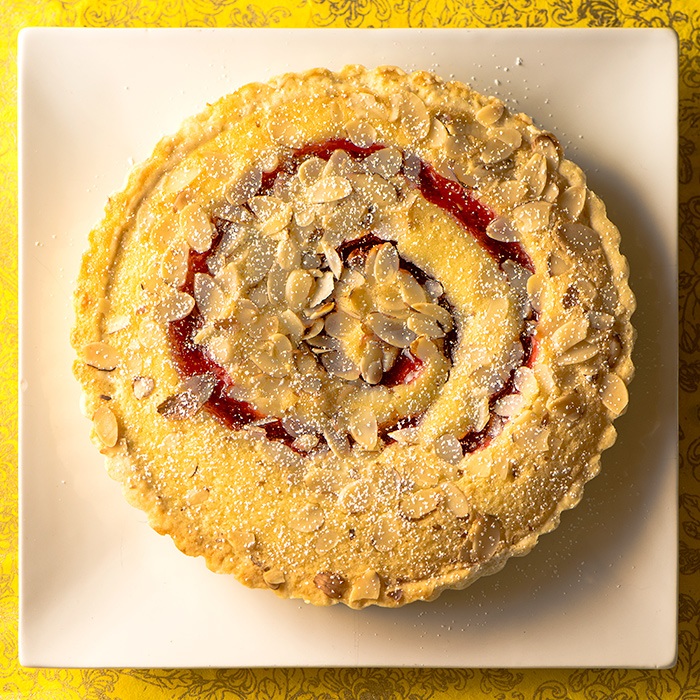 Gluten-Free Almond Raspberry Cake
Gluten-Free Almond Raspberry Cake
This cake has a fabulous moist texture. It’s also gluten-free and freezes beautifully. Serve it warm and add a dollop of ice cream.
Makes one 9-inch cake
Ingredients
Cooking spray, for greasing the pan
1/2 cup (1 stick) unsalted butter, melted
1/4 cup cannabutter, melted
1 1/4 cups plus 2 tablespoons sugar, divided
2 eggs, lightly beaten
1 Tbsp orange juice concentrate
2 tsp freshly grated orange zest
1 tsp almond extract
1 1/2 cups of your favorite gluten-free flour (with a 1-to-1 ratio)
1/2 cup plus 2 tablespoons raspberry jam, divided
1 cup slivered or sliced almonds
3/4 cup vanilla Greek yogurt, for garnish
1. Preheat the oven to 340°F. Spray a 9-inch cake pan with the cooking spray and set it aside.
2. In a large bowl, whisk together the unsalted butter, cannabutter, and 1 1⁄4 cups of the sugar.
3. Stir in the beaten eggs, mixing well. Stir in the orange juice concentrate, zest, and almond extract.
4. Stir in the flour until just mixed. Turn the batter into the prepared pan. Swirl 1⁄2 cup of the jam through the cake with a small spoon. Sprinkle the top of the cake with the almonds, followed by the remaining 2 tablespoons sugar.
5. Bake until the cake is golden and set or a toothpick inserted in the center comes out clean, 35 to 40 minutes.
6. Let the cake completely cool in the pan.
7. Just before serving, combine the yogurt in a small bowl with the remaining 2 tablespoons of jam and place a dollop on each slice.
Gonna pass on the grass? Try one of these 8 under-the-radar (and yes, totally legal) superfoods...
Loading More Posts...